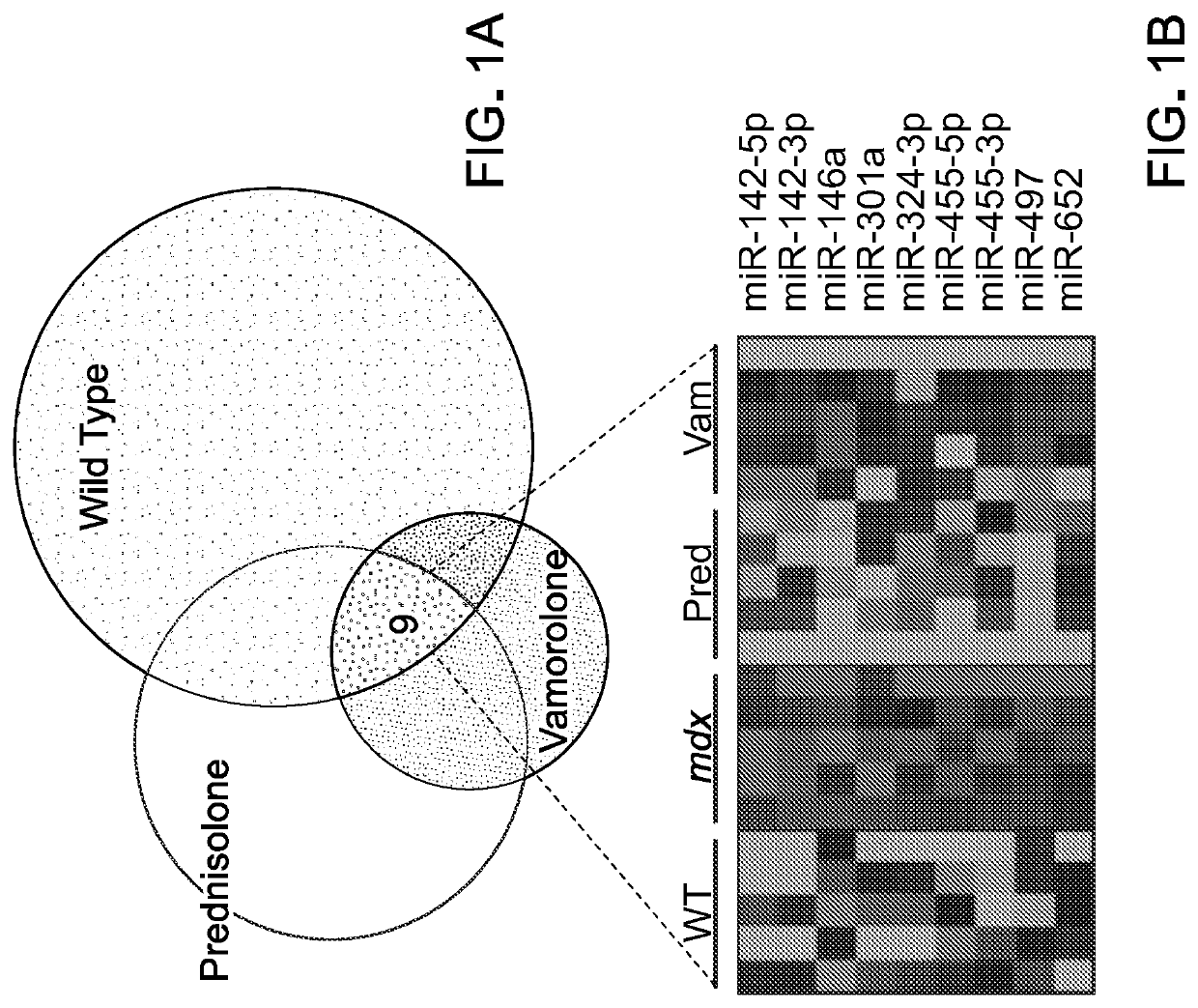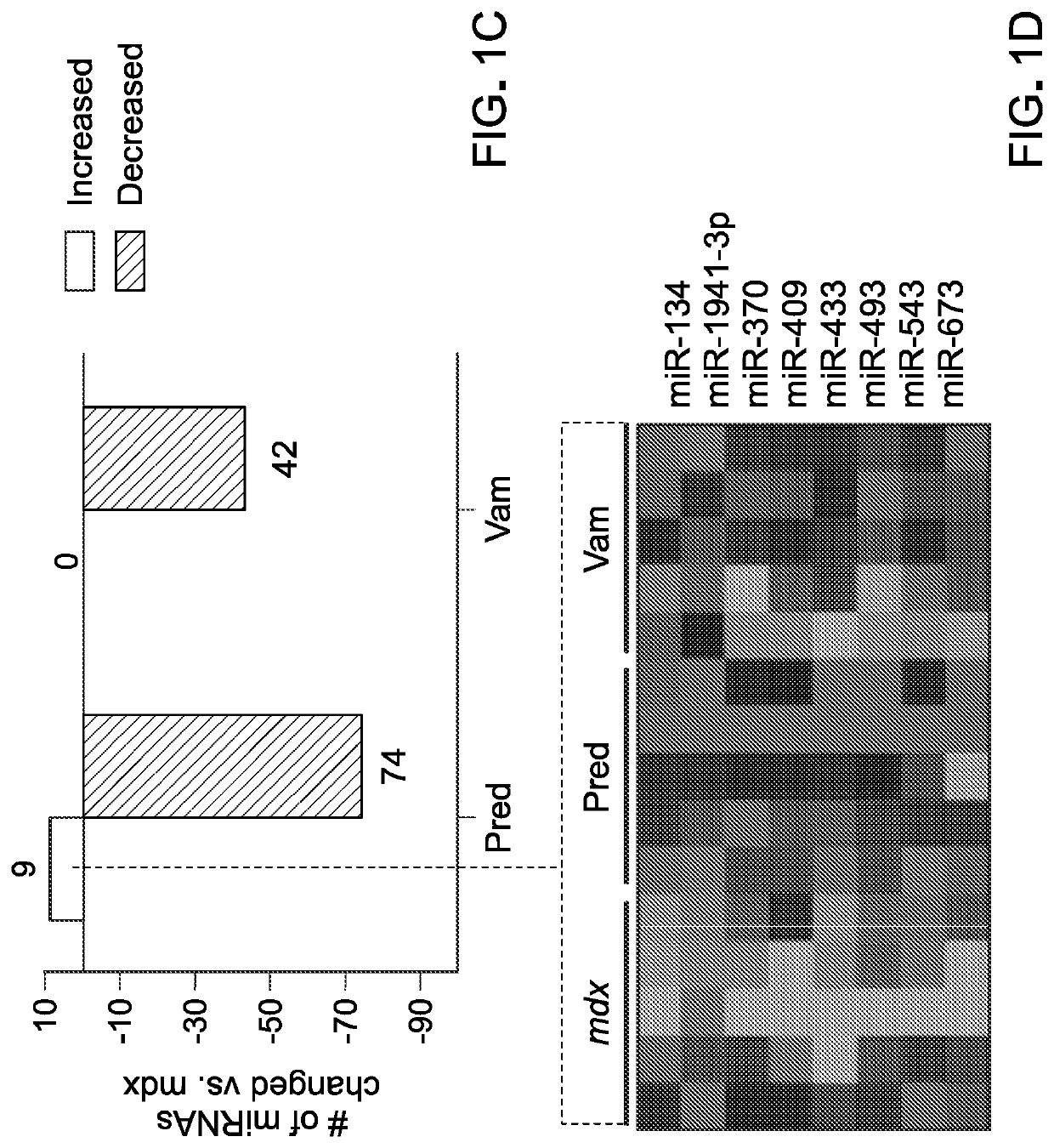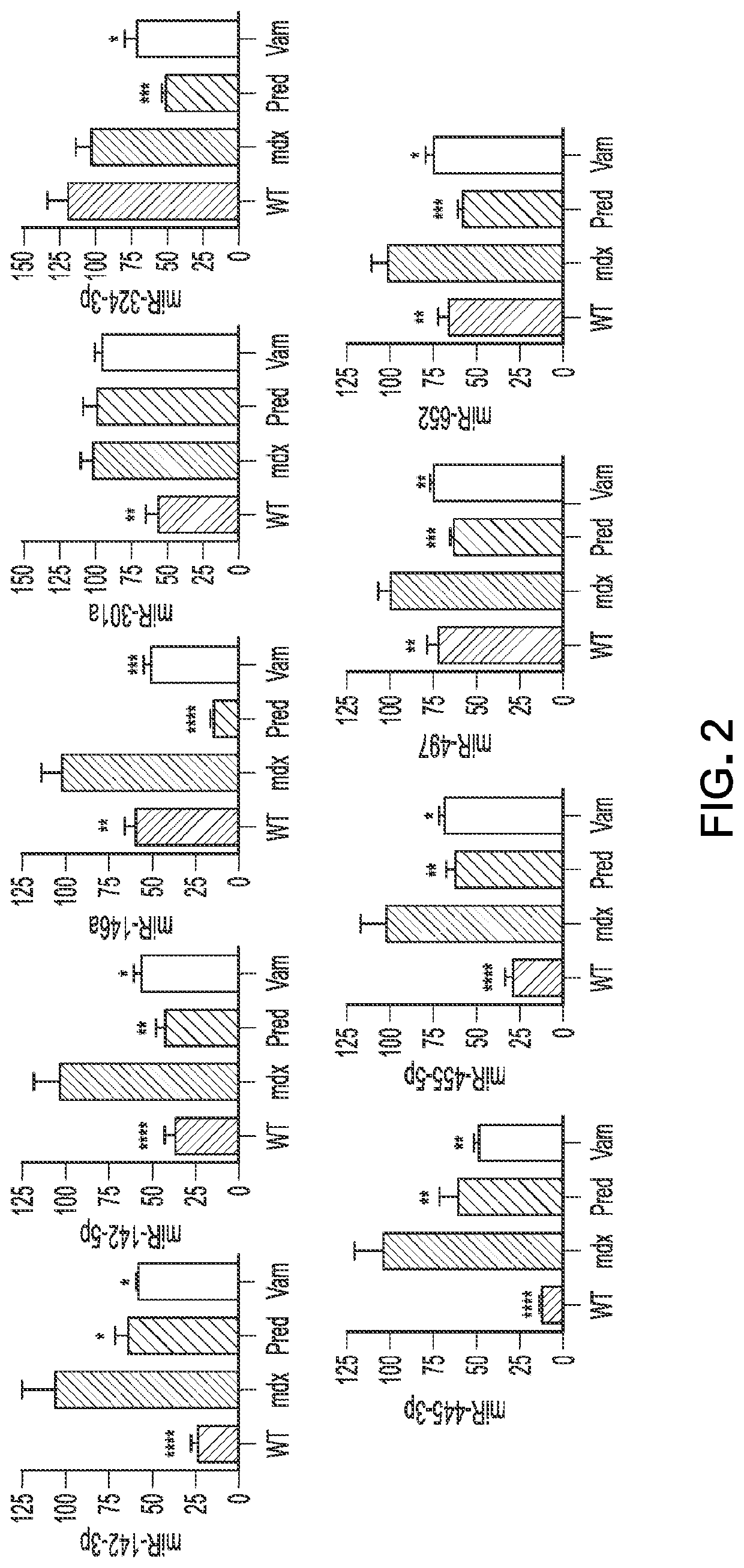Compositions and methods for treating and preventing muscular disorders and dystrophies, steroid side effects, and inflammation
a technology applied in the field of compositions and methods for treating and preventing muscular disorders and dystrophies, can solve problems such as negative impact on patient quality of life, and achieve the effects of increasing muscle function, enhancing mirnas, and increasing mir-146a expression
- Summary
- Abstract
- Description
- Claims
- Application Information
AI Technical Summary
Benefits of technology
Problems solved by technology
Method used
Image
Examples
example 1
[0196]The Examples described herein were carried out with, but not limited to, the following methods.
Animal Care
[0197]All mouse studies were performed in adherence to the NIH Guide for the Care and Use of Laboratory Animals. All experiments were conducted according to protocols that were within the guidelines and approval of the Institutional Animal Care and Use Committee of Children's National Medical Center. All mdx (C57BL / 10ScSn-Dmd\3) and wild type control (C57BL / 10ScSnJ) mice were obtained from The Jackson Laboratory (Bar Harbor, Me.).
Drug Dosing and Mouse Muscle Samples
[0198]Archival muscle samples (diaphragm) from two separate preclinical studies were obtained, with each trial showing a significant benefit from both prednisolone and vamorolone drug treatments (23). Prednisolone was used because it is the active form of prednisone, the current DMD standard of care. The first, “discovery set” of diaphragm muscles was from a prophylactic trial design where 2-week old (postnatal ...
example 2
of miRNAome Responses to Muscular Dystrophy Disease and Treatment
[0205]To examine miRNA expression TaqMan low density qPCR array cards were used to profile approximately 750 miRNAs within diaphragm muscle from a discovery set of mice. Samples for this experiment came from a trial that utilized a prophylactic approach (23). Briefly, mdx mice undergo a stage of peak severity characterized by widespread inflammation and necrosis from approximately 3-8 weeks of age, followed by a recovery stage where mice show milder phenotypes (25). For this prophylactic preclinical trial, treatments were initiated in mice at P15 in order to treat before and during the stage of peak severity. The discovery set of samples consisted of diaphragm from 8-week old untreated wild type (vehicle), untreated mdx (vehicle), prednisolone-treated mdx (5 mg / kg), and vamorolone-treated mdx (15 mg / kg) mice. Prednisolone was used here because it is the active form of prednisone, the current DMD standard of care. Diaph...
example 3
miRNA Responses are Conserved in an Independent Validation Trial
[0210]Having identified nine inflammatory miRNAs of interest in the discovery set of mice, the next step was to both validate the miRNA markers that were found and to expand upon the results to determine which ones are of utility in other disease stages or trial designs commonly studied in mdx literature (23, 25). To do this a validation set of samples was obtained from a separate, independent trial using a different trial design characterized by a prolonged treatment regimen in older mdx mice. Samples were obtained at a trial endpoint of 6 months. At this stage, mdx mice show less variability however they have gone through a recovery stage which results in milder phenotypes that typically require treadmill exercise to unmask. Here, gene-specific qRT-PCR was used to detect expression levels of each individual inflammatory miRNA within diaphragm muscle from the validation set. Differences in the trial design for the vali...
PUM
| Property | Measurement | Unit |
|---|---|---|
| weight | aaaaa | aaaaa |
| hang time | aaaaa | aaaaa |
| hang time | aaaaa | aaaaa |
Abstract
Description
Claims
Application Information
 Login to View More
Login to View More - R&D
- Intellectual Property
- Life Sciences
- Materials
- Tech Scout
- Unparalleled Data Quality
- Higher Quality Content
- 60% Fewer Hallucinations
Browse by: Latest US Patents, China's latest patents, Technical Efficacy Thesaurus, Application Domain, Technology Topic, Popular Technical Reports.
© 2025 PatSnap. All rights reserved.Legal|Privacy policy|Modern Slavery Act Transparency Statement|Sitemap|About US| Contact US: help@patsnap.com



